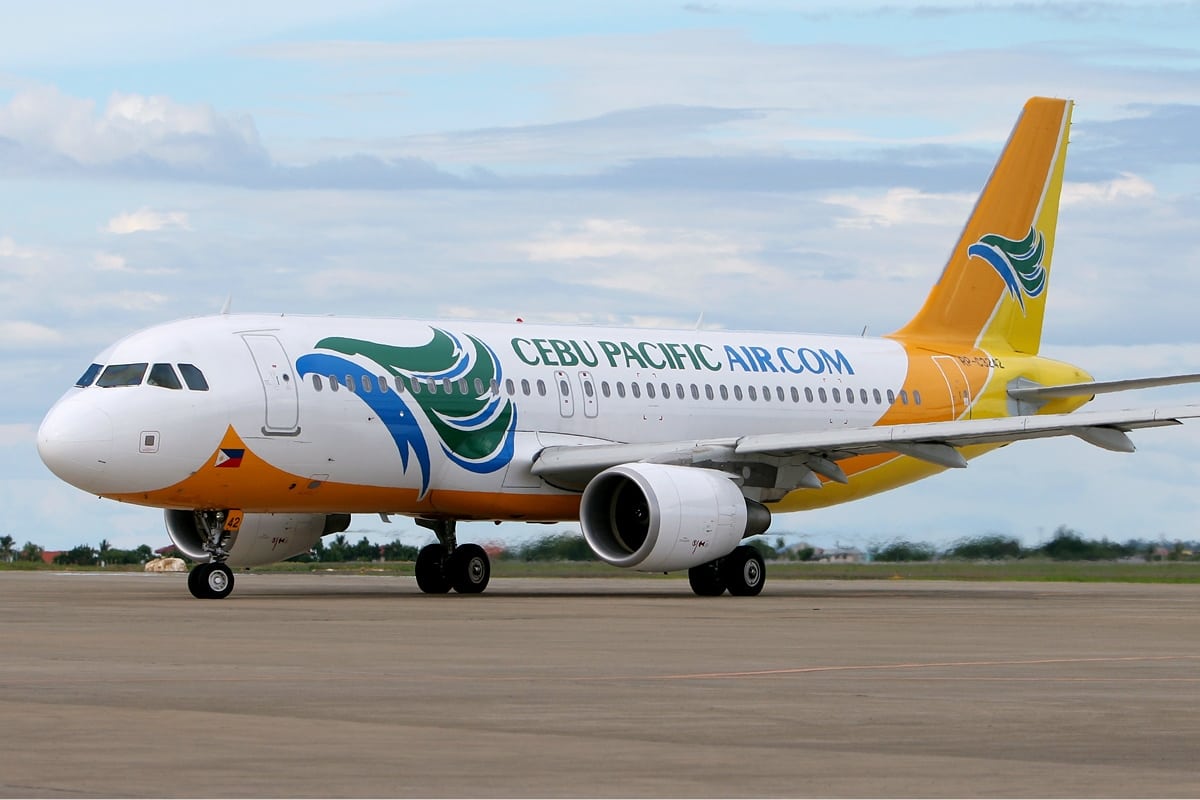[Avionics Today 08-10-2016] Nearly three years after one of the deadliest typhoons on record swept through the Philippines, the Asia-Pacific nation’s latest satellite-based navigation procedures have become operational within its airspace. The new procedures were donated by collaborative work performed by Honeywell Aerospace and Hughes Aerospace. Both companies worked with the Civil Aviation Authority of the Philippines (CAAP) and local airlines to deploy the latest Performance-Based Navigation (PBN) procedures in the country in late June.

Cebu Pacific A320. Photo: Cebu Pacific Air.
In 2013, Typhoon Haiyan created a 13-foot storm surge in the Leyte Gulf that swept through the city of Tacloban killing more than 6,300 people and destroying nearly 1.1 million homes. After the storm, one of the only ways to get relief efforts to residents in the Tacloban region was through the Daniel Z. Romualdez Principal Airport. However, the airport itself also suffered major damage, as the storm destroyed its Very High Frequency (VHF) Omnidirectional Range (VOR) ground-stations and landing lights. That limited air relief operations at the time, but ultimately lead to a new satellite-based solution, the Philippines’ first Required Navigation Performance (RNP) 1 Standard Arrival Routes (STARs), Standard Instrument Departures (SIDs) and Global Navigation Satellite System (GNSS) approach into the airport. All of the new procedures were published in the International Civil Aviation Organization (ICAO) Aeronautical Information Publication (AIP) in June 2016.
“After the typhoon destroyed the VOR, we realized this was not the first time this happened and it was not going to be the last. In collaboration with Hughes Aerospace, we offered an immediate free-of-charge GNSS approach into the airport, so that when this happens in the future, the whole relief effort is not reliant on ground-based navigation aids,” Brian Davis, vice president of airlines, Asia Pacific at Honeywell Aerospace, told Avionics Magazine.
According to the International Federation of Red Cross and Red Crescent Societies 2015 World Disasters report, the Philippines is “one of the most disaster-prone countries in the world,” with more than 103 million people reportedly affected by natural disasters between 2005 and 2014.
The new satellite-based procedures help bring the Philippines into the next generation of commercial air transportation operations, as well. In December 2012, ICAO released a progress report on PBN implementation in the Philippines, showing the country’s first RNP approaches were implemented at two international airports, Ninoy Aquino International Airport (NAIA) and Puerto Princesa Airport, and one domestic airport, Iloilo Airport.
Other countries, especially western nations, are in the process of de-commissioning unused VOR stations. In the United States for example, the FAA released an official policy statement in July 2016 listing 308 VORs throughout the National Airspace System (NAS) that it is currently considering decommissioning.
While the CAAP ultimately ended up replacing its typhoon-destroyed VOR, Davis said all aircraft using the airport are equipped to fly the newly published PBN procedures, and airlines have welcomed them. Cebu Pacific, a low-cost carrier based in the Philippines, aided the effort to deploy the new satellite-based navigation procedures by allowing Hughes and Honeywell to use its Airbus A320 simulator to test the new procedures before they were made operational.
“We were able to lower the landing minimums over the traditional VOR approach. The new GNSS approaches were published in the AIP at the end of June, when the airlines flying there get their latest navigation database updates in their FMS, those approaches are there. We’ve received positive feedback from Philippines Airlines, and Cebu Pacific; they like the approaches because of the lower landing minimums, but they’re also using the existing [Standard Terminal Arrival Route procedures] STAR, which is now connected to the GNSS approach. So air traffic control already knows the airspace, the pilots already know the airspace, so not only was it a helpful on the landing minimums it was easy and useful to fly because they’re already used to that approach and direction into the airport,” Davis added.
The actual work between Honeywell, Hughes and CAAP to implement the new procedures began in 2014, Chris Baur, CEO of Hughes Aerospace, told Avionics Magazine. During the process of coding and flight-testing the new procedures, Hughes became the Philippines’ only licensed third-party Air Navigation Service Provider (ANSP), as it was required by CAAP to provide to provide the new procedures at the airport.
“These are the first RNP 1 procedures in the Philippines,” Baur said, noting that the new GNSS approach is a continuous descent approach that avoids flying to the VOR station and then outbound from the VOR.
“With PBN you can put the airplane where it needs to be. It reduces the amount of track miles flown, reduces the aircraft’s environmental impact, and fuel burn. It’s also continuous descent approach, versus the existing one where they had to fly to the VOR and then fly outbound from the VOR to make the final approach into the airport.”
Davis says the Honeywell-Hughes partnership, which has completed deployments for several other PBN projects in China, and Myanmar, among other regions, is currently in talks with Indonesia’s civil aviation authority to bring similar procedures to Indonesian airspace.
“Now that we have the first one to be published in the Philippines we’re going continue to expand PBN to the rest of the terrain-challenged areas of the Asia Pacific,” said Davis. “Right now, Indonesia has one of the highest rates of runway excursions. One of the things that we’re working on is promoting our Smart Landing Smart Runway capability, which is just a simple software upgrade to the Honeywell EPGWS computer, which is installed on 85 percent of the in-service fleet. So that is one of the technologies we’re working on for runway excursions, but the other key initiative is to usher in more PBN approaches throughout the region.”